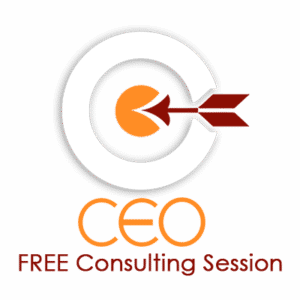
Summary: The term “out-of-the-box thinking” has been around for decades. Let’s explore how watching a movie offers a unique approach to transforming team conflict into team collaboration.
Dear Dr. Sylvia,
I grew up in a world where the mantra was “better safe than sorry.”
Therefore, risk-taking is not in my toolkit.
For example, I lost out when I hesitated to accept a position at another company. Why? Because it was risky.
I want to break out of this self-imposed prison I have created, where fear of failing is huge.
Thanks for giving me some pointers.
Signed,
Ready to Risk
We Are All Connected, No One Wins Unless We All Do
Dear Ready,
Everyone comes to a bend in the road where one side is sameness and the other is variety.
Sameness can keep us safe, but it can also keep us stuck. Variety opens our eyes to curiosity and creativity.
Here is my story of a time I was willing to risk being fired if the situation turned south.
My “why” had to do with the burning belief that as we get to know each other better there is more good than fighting and anger. I wanted to find a way to create a bridge of understanding and see if, in fact, it really matters.
I took a chance with a team I was coaching. A bold move. So bold, in fact, it could have cost me my role as their trusted consultant.
But sometimes, the box needs to be shattered.
The Backstory
Josh was a tall, fit, confident ex-Marine—one of the top salespeople in his organization. He was well-liked, a team player, and a natural leader. But even the strongest among us have moments that cut deep.
He told me one day, with a look of pain still fresh on his face, “It felt like I was kicked in the gut when the team leader made a snarky comment about my relationship.”
You see, Josh had recently married another man. And while society has made progress, micro-aggressions and careless jokes still have the power to wound.
The comment—meant as a “private joke” among a few colleagues—made its way around the office, as these things do. Gossip thrives in silence. Jerry, who had served his country with pride, now felt diminished in a place where he should have felt safe and respected.
He was ready to take his complaint to HR, naming his team leader, Ted, as the offender.
HR, aware that the executive team had an offsite retreat scheduled the following week, suggested we use that setting to address the issue in a more holistic and productive way.
That’s when I decided to take a risk.
A Pattern Interrupt
Instead of the typical conflict resolution process—talking, listening, hashing it out—I introduced a concept I call a pattern interrupt.
I asked the team to watch a film.
Yes, a film. Not your typical training video or TED Talk. I chose the movie Rashomon, the legendary Japanese classic about a crime seen from four different perspectives—each one entirely different, each character fully convinced their version is the truth.
It’s a movie that forces you to confront a difficult truth: we all view life through our own unique lens. And that lens is shaped by experience, emotion, trauma, and survival.
I didn’t point fingers. Neither, I didn’t say “this is about Josh” or “this is about Ted.” I invited them into a space of reflection.
And something remarkable happened.
The Shift
After the movie, Josh shared his story—what it was like to leave the structure of the Marines and step into a civilian world where he was judged not for what he did, but for who he loved. His voice was steady but filled with weight.
As the room listened, others began to open up. People shared their own experiences of feeling “othered,” misunderstood, or marginalized.
Then Ted shifted in his seat. He cleared his throat.
And he began to speak.
“I grew up in Hollywood. You all know my father—he was a famous actor. To the outside world, that sounds glamorous. But let me tell you, it was chaos.”
He talked about the divorce. The pressure of being in the spotlight. The weekends spent with his father—parties, drugs, celebrities, zero boundaries. He was hit on by adults—male and female—while still just a teenager.
“What I craved more than anything was normalcy. Predictability. Sameness. And when I met you, Jerry… well, you reminded me of that world I wanted so badly to leave behind. I made those wise-ass cracks to keep you at arm’s length. Not because of who you are—but because of what you stirred in me.”
And then came the moment of transformation:
“You’re a competent and caring man. I owe you an apology. Watching Rashomon helped me realize that my version of the story wasn’t the only one—or even the most accurate.”
The room was still. A hush, like the moment before a storm—or after a breakthrough.
And then: a collective exhale. The tension dissolved. The weight lifted.
What had felt like a snarling tiger turned out to be a frightened kitten, just wanting to be seen.
Fast Forward Seven Months
At the company’s annual awards dinner, the entire team—Josh, Ted, and their colleagues—received top honors for the highest annual sales.
They didn’t win because they had some magical technique. They won because they faced the truth. They took the risk to be honest, to be vulnerable, to connect.
Not through blame.
Not through shame.
But through understanding.
This team learned a valuable lesson about how relationships, not products, are at the core of financial success.
The Lesson
Workplace transformation doesn’t always come from policies or procedures. Sometimes, it comes from courage. From storytelling. From perspective.
From a movie like Rashomon that reminds us: what we think we know may only be one small piece of a much bigger, more human story.
And when we dare to share those stories—without judgment, with compassion—remarkable things happen.
Not only does the team win…
So does the bottom line.
To your success,
Sylvia Lafair
PS. There is a way to share personal stories at work for tensions to be released and conflcit to be resolved. Please email me at sylvia@ceoptions.com for a complimentary copy of my book UNIQUE: How Story Sparks Diversity, Inclusion and Engagement.


